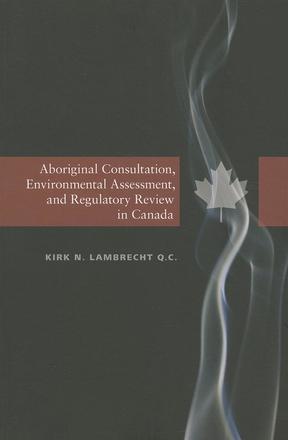
Aboriginal Consultation, Environmental Assessment, and Regulatory Review in Canada
Description
Supreme Court of Canada decisions have defined a general framework for the "duty to consult" Aboriginal peoples and accommodate their concerns over natural resource development, but anticipate the details of that framework will be expanded upon in the future. Aboriginal Consultation, Environmental Assessment, and Regulatory Review in Canadaoffers a paradigm that advances that discussion.
It proposes an integrated and robust planning model for natural resource planning model for natural resource extraction allowing Aboriginal peoples, industry, governments, tribunals, and the Courts to all make contributions to reconciliation in the context of sustainable development and environmental protection.
Kirk Lambrecht surveys the law of actual and asserted Aboriginal rights and historical and modern Treaty rights in Canada and discusses the national and international purposes of environmental assessment and regulatory review. He appraises the fundamental principles of Supreme Court of Canada jurisprudence defining aboriginal consultation and accommodation as a constitutional imperative and uses case studies involving the National Energy Board to demonstrate how integrated process has evolved over time. Finally he offers general conclusions on the practical utility, and outstanding challenges, involving an integrated planning paradigm.